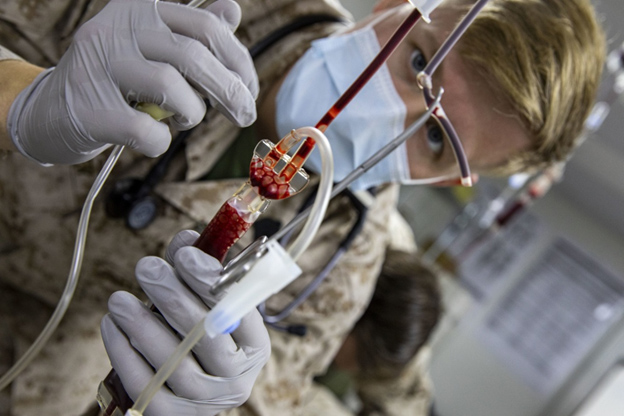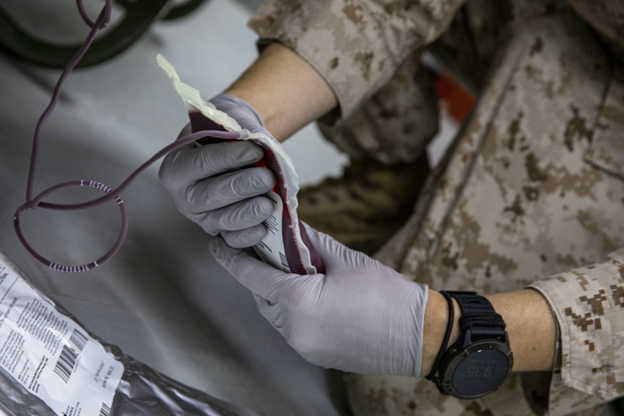Future military conflicts may occur in remote locations or dense urban environments where medical supply chains may be difficult to maintain. In such resource-constrained settings, reliable triage protocols are critical for making sure that medical supplies are used only when necessary. Blood products are an example of resources that must be used prudently, considering their short shelf life and storage requirements. Medical personnel in deployed settings could benefit from a fast and straightforward decision tool to guide the use of blood products.
The Shock Index (SI) has been validated in multiple civilian populations for determining the need for massive transfusion (>10 units of blood products in 24 hours), and is calculated by dividing a patient's heart rate by their systolic blood pressure. A team of researchers from Madigan Army Medical Center evaluated whether the SI could identify if an injured Service member in a combat environment needs a high volume of blood products.

The team used data from patients in the DOD Trauma Registry whose vital signs were recorded at medical facilities with surgical capabilities in combat environments. This included 4,008 patients. Blast injury was the most common mechanism of injury in this group as a whole, with 82 percent experiencing a blast event. Approximately 2 percent of patients had received massive transfusion, and the researchers determined that patients at or above an SI threshold of 0.8 had a significantly greater need for massive transfusion than those below 0.8. Further evaluation of using an SI threshold of 0.8 in this group demonstrated a sensitivity (whether patients who had massive transfusion were detected) of 87 percent, and specificity (whether only those patients were detected) of 78 percent. The negative predictive value of the 0.8 threshold was 99.6 percent, meaning that most patients with an SI less than 0.8 did not receive massive transfusion. The authors conclude that more research is needed to define the conditions and considerations associated with using the SI for triaging combat casualties.
This study demonstrates the potential utility of the SI to assist in determining the need for blood products in resource-constrained environments. Decision support algorithms, such as the SI, that can be run quickly with only basic medical equipment may be a great help to rapidly and efficiently deliver life-saving care to injured Service members.

1. Marenco, C.W., Lammers, D.T., Morte, K.R., Bingham, J.R., Martin, M.J., and Eckert, M.J. (2020). Shock index as a predictor of massive transfusion and emergent surgery on the modern battlefield. J Surg Res, 256, 112-118.
Your 15 minute session will timeout in approximately 10 minutes.
If you're in the middle of entering information, please close this warning and save your progress (if possible) or finish up your task.
If your session fully times out, you will lose any un-saved work.
Your current Blast Injury Research Program session has expired.
Your next click will take you away from the private area, and you will lose any work you have in-progress.
Please enter your email address, and try again.